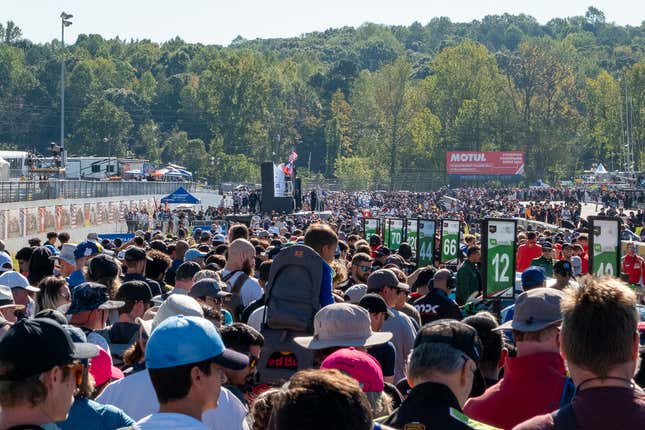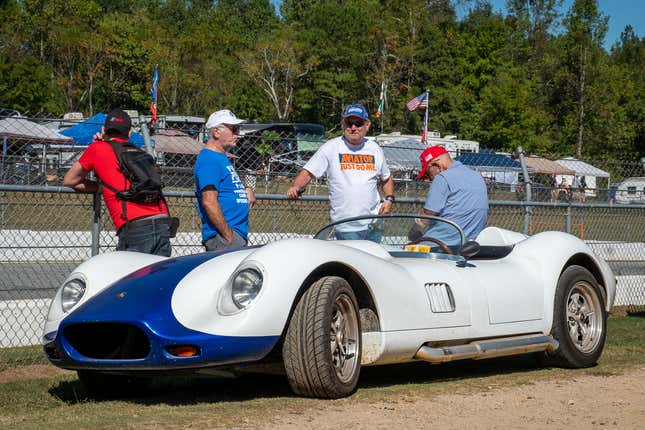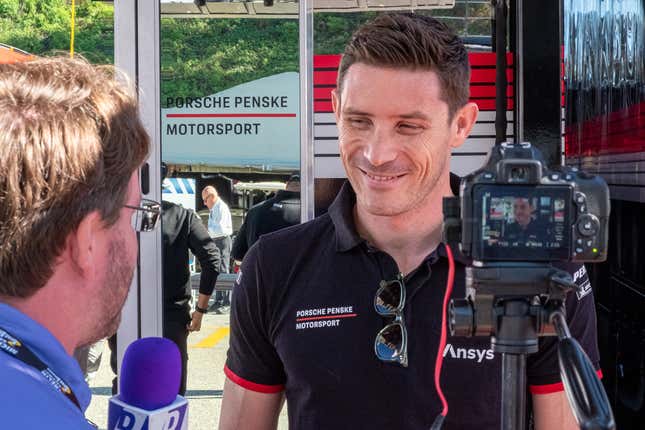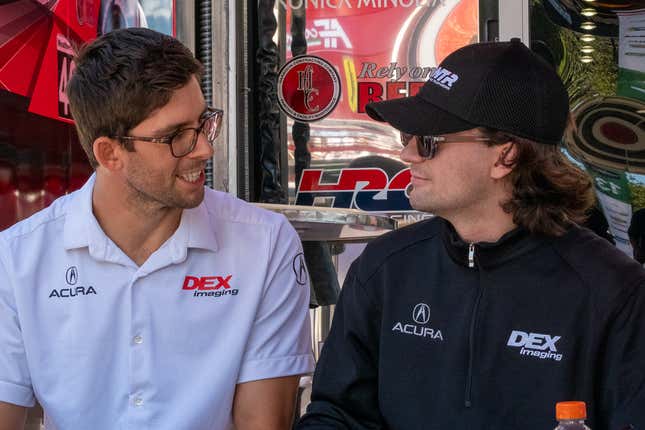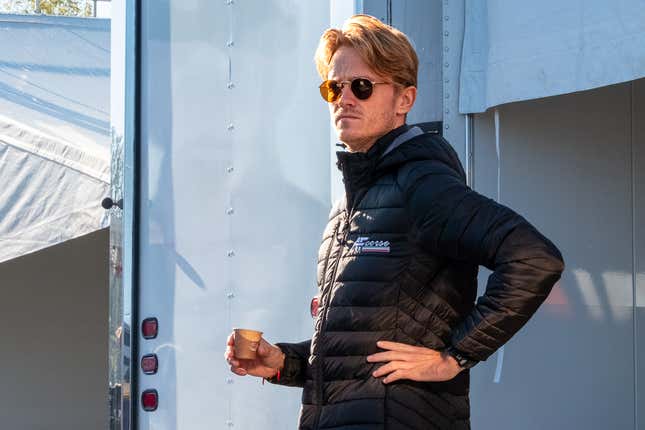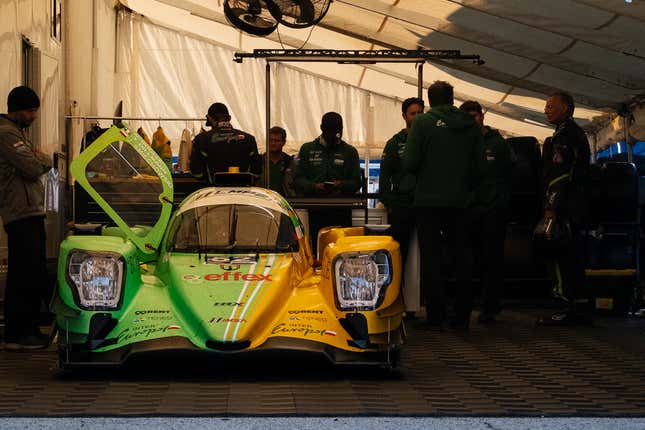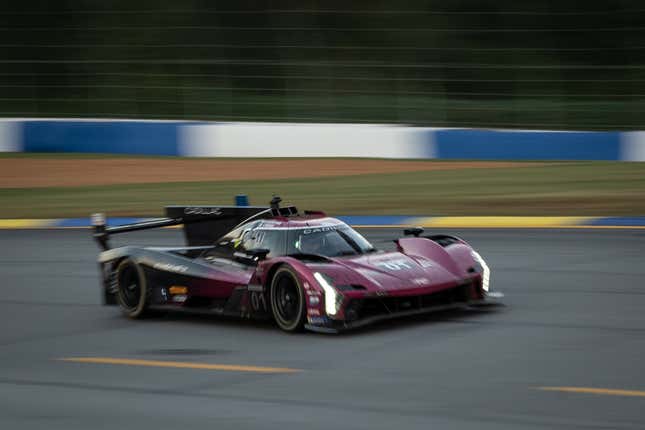A pink Cadillac going 170 mph in the dark with no headlights won Petit Le Mans this past weekend. I was lucky enough to be staring out of a suite overlooking the front straight at Road Atlanta in the race’s closing minutes when it came rocketing down the hill through turn 12, invisible in the darkness but for its rooftop sentinel light, and in the time it took to articulate the thought, “Who the—?” it became apparent that the car with no lights was indeed the race-leading 01 Chip Ganassi Racing V-Series.R piloted by a presumably wide-eyed Renger van der Zande. Lights or no lights, he didn’t lift, and indeed completed the better part of a lap hurtling into the blackness of the Georgia night like a teenager hellbent on scaring the bejeezus out of his friends.
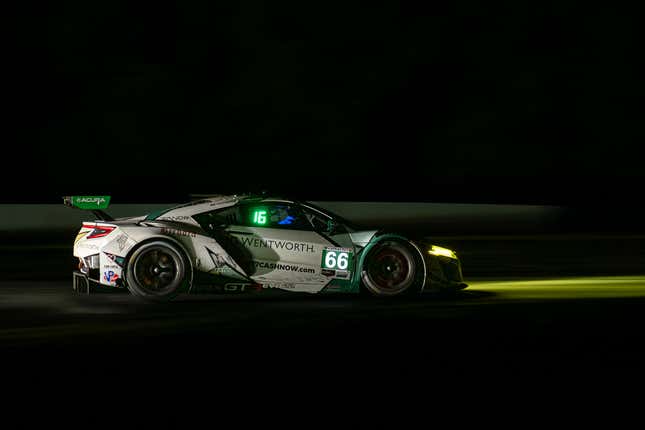
Miraculously, just as John Hindaugh in the press box below began to speculate about black flags, the lights flickered and came back to life — only to flicker again, the record crowd on hand holding its collective breath as van der Zande maintained his 3-second lead over the number 6 Porsche Penske 963 in the race’s final moments, first with one headlight, then none, and finally both flashing frantically as he took the checkered flag to fireworks and jubilation.
The Cadillac’s slim championship hopes going into the weekend had been quashed during qualifying, but the result made for an unexpectedly happy ending to a final season for the CGR program that had seemed at times star-crossed. Wayne Taylor Racing will take over the factory Cadillac effort in 2025. While we know what’s in store for van der Zande, the same cannot be said for his full-season co-driver Sebastian Bourdais. But, together with Scott Dixon they certainly made their closing performance in the 01 car a memorable one.
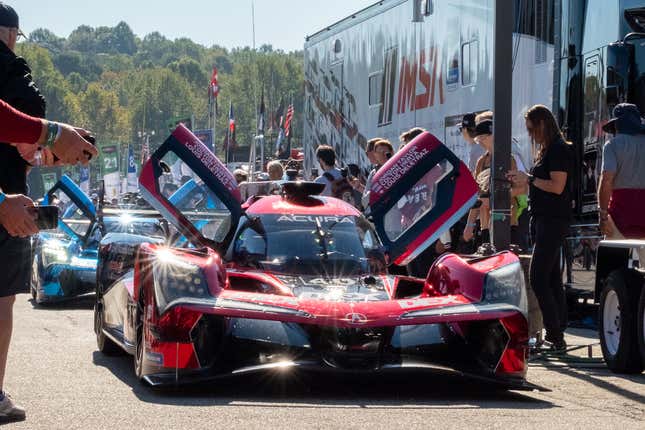
The mood in the Acura suite from which I witnessed the above was more subdued. In their final outings before Meyer Shank and HRC assume the Acura helm next year, each of the WTR ARX-06s led the race at times. With less than an hour remaining, Ricky Taylor in the blue number 10 car had just taken the lead from Nick Tandy’s Porsche 963 when a deadstick Proton Mustang appeared in his path, too late to be avoided. Thankfully no one was seriously hurt, but the damage to both cars (and the Wright Motorsports Porsche 911 of Jan Heylen, who’d tangled with Corey Lewis in the Ford) was terminal, and Taylor’s emotion after being eliminated from contention in the final hours of this race for a second year running was evident in a gut-wrenching interview back in the WTR garage. Tough stuff.
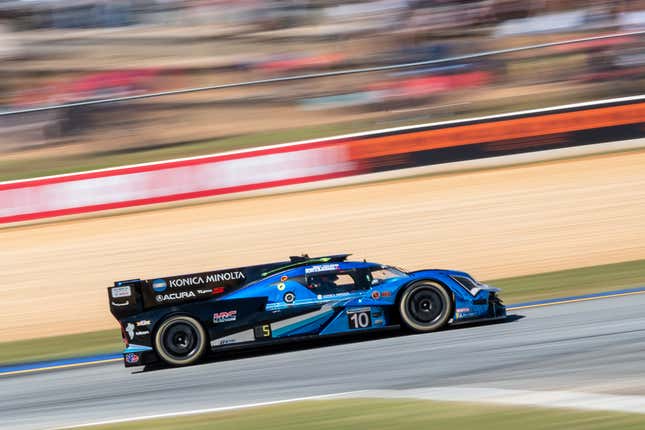
The factory 963s rounded out the GTP podium, the number 7 car of Dane Cameron and Felipe Nasr finishing third and clinching the championship after a season that looked a lot more like what one might’ve expected when news first broke of a Penske-Porsche partnership than last year’s somewhat shaky start.
We might not yet be seeing quite the 1980s-level world dominance of their 956 and 962 forebears (or even the more recent success of the 919s), but both here and in the WEC, the Penske Porsches made it clear in 2024 that they are the team to beat going forward.
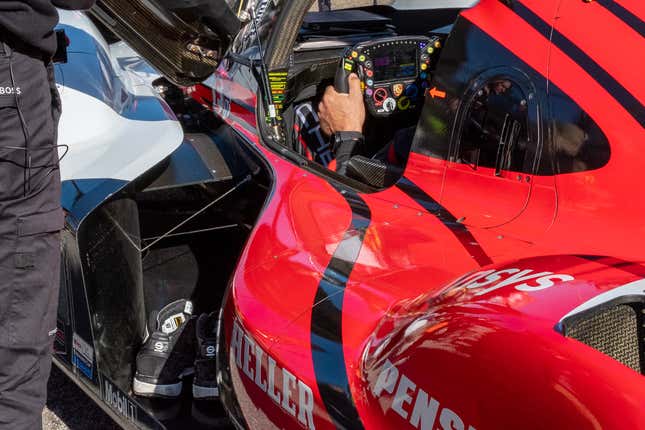
There were more championships to be settled. A fifth-place finish was enough for plucky Polish upstarts Inter Europol, who scored a surprise win at Le Mans in 2023, to net the LMP2 title in their first full season in IMSA (with the help of stateside partners PR1/Mathiasen Motorsports). In GTD Pro, rookie Laurin Heinrich’s pole performance in qualifying proved to be the difference for everyone’s favorite dinosaur, the AO Racing “Rexy” Porsche 911, in finishing a scant four points ahead of the number 23 Heart of Racing Aston Martin in the standings despite a tough day for the former and a podium for the team of Ross Gunn, Alex Riberas, and Roman de Angelis in the latter. Finally, to the surprise of absolutely no one, the Winward Racing Mercedes-AMG wrapped up the GTD title for Phillip Ellis and Russell Ward after a remarkably consistent season that began with a win at Daytona all the way back in January.

This year’s edition of the Petit — with attendance up better than 10% over last year per IMSA’s John Doonan, and the biggest crowd one fellow garage-gawker who’d been coming since the inaugural running back in 1998 told me he’d ever seen — also tied a bow on another stunningly successful year for the series. It’s becoming increasingly difficult to argue with the idea that sports car and endurance racing in the U.S. has never been healthier, with packed grids, sick cars, talented and charismatic drivers, and closer competition than ever before. And with the wild, normally-aspirated V12 Aston Martin Valkyrie joining the GTP fray next year, and still more manufacturers (Hyundai, Mercedes-AMG, McLaren?) either openly discussing or rumored to be planning top-level prototype efforts, the party shows no signs of slowing down. Even Cupra — the high-performance Seat spinoff brand said to be planning an entry into the U.S. marketplace by decade’s end — had a TCR car on display, with which they hope to join the Michelin Pilot Challenge next season. Apparently IMSA is so good at this point that they’re inventing new car companies just to compete in it!
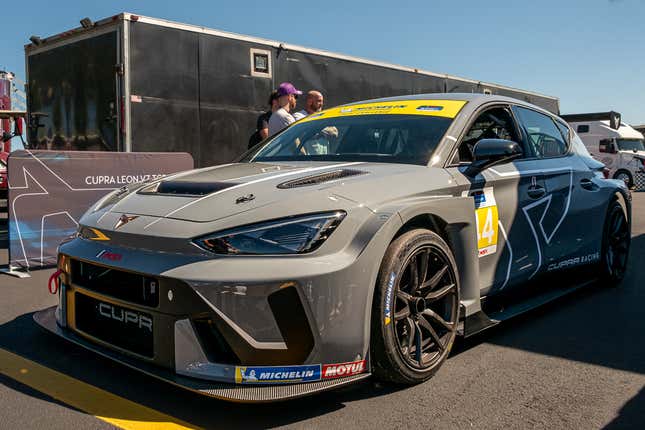
And truly, there might not be a better venue to showcase all of it than Road Atlanta. This writer spent four years living within an easy day’s drive and somehow never made it down. I knew at the time that I was stupid for not trying harder to make it happen; now I know exactly how stupid. Good lord. Do you like loud, colorful projectiles blowing past you at elbow’s length at upwards of 180 miles per hour? Do you like trails of sparks, glowing brake rotors and cars spitting fire — even the ones that aren’t wearing dragon liveries? I don’t know that I’ve been to another track that lets a regular paying customer get closer to the action than this one, or provides more killer vantage points from which to view the proceedings. It is very fast, and it only gets more spectacular when the sun goes down.
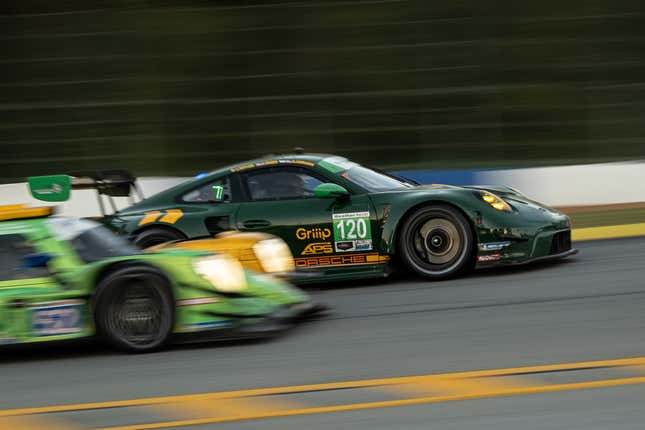
A special place, and the pomp and circumstance of the accompanying ceremonies might actually outdo those of the Rolex 24 season opener. And like every IMSA event, the best part might be the way you can collect little right-place-at-the-right-time moments just walking around the paddock or the infield. A cool old Lister replica that closer inspection reveals to be a Beck, the company famous for their highly-regarded reproduction Porsche 550 Spyders, and the amiable octogenarian with the MAGA hat sitting on the fender turns out to be Chuck Beck himself. Smiling 53-year-old Texan pole-sitter Ben Keating wishes luck to his French rival Lilou Wadoux, the Ferrari factory driver thirty years his junior, on his way past the AF Corse garage. A boy in a wheelchair, maybe ten years old, gets a photo with Robert Wickens’ hand-controlled Hyundai TCR. Five-time Le Mans-winner Derek Bell holds court backstage with the current crop of drivers as they await their moment during the pre-race introductions — a backstage I have no business being in, by the way, just a roped off area behind the flatbed where you or anybody else could walk over and be granted an identical perspective.
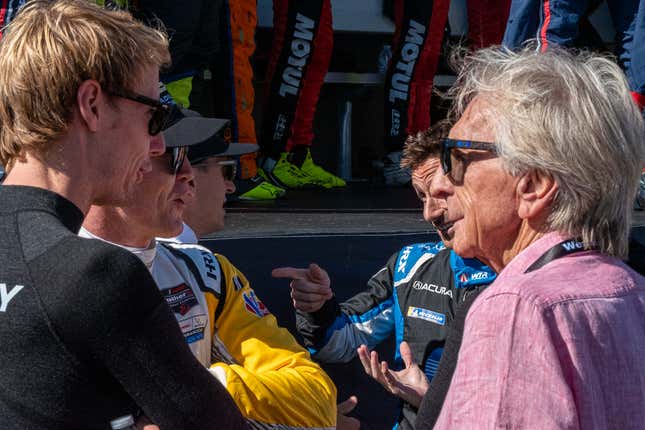
For better or worse, it won’t always be like this. Either IMSA will keep growing at the cost of at least some part this extraordinary level of accessibility, or the historically cyclical nature of sports car racing, where growing costs inevitably intersect with diminishing returns, will at some point catch up with it, whereupon the pendulum swings back from big-budget manufacturer programs to smaller privateer efforts — it’s a delicate equilibrium that the current ruleset seems to be doing a very good job of maintaining, for the moment at least. But now would be an excellent time to start making plans for 2025. They call them golden eras because they don’t last forever, and the one we’re watching right now is about as golden as they come.
